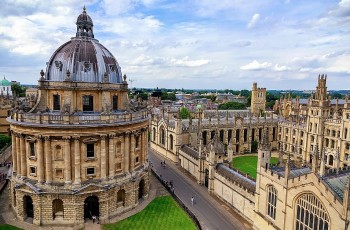Top 30+ History Questions That Most Americans Get Wrong
 |
| Top 30+ History Questions That Most Americans Get Wrong |
| Table Content |
Whether or not American students know enough about their nation’s history — and what exactly should be included in any assessment of that question — has become a perennial school-year subject of debate. After all, in the most recent U.S. History installment of the so-called “nation’s report card” from the National Assessment of Educational Progress, only 18% of eighth-graders surveyed scored a “proficient” or “advanced” score on the test.
Not everything you learned in school about US history is 100% accurate. Many say history is written by the winner, leaving much of the truth out. In recent years, historians and experts have been coming forward to reveal the true stories about some of America's biggest historical events.
From the first Thanksgiving to the moon landing, here's everything your teacher may have gotten wrong about American history.
Top 30+ History Questions That Most Americans Get Wrong
1. When is Independence Day?
The myth: The Fourth of July is when America first declared independence from British rule.
The truth: It was actually two days earlier, on July 2nd, that the Continental Congress voted for independence. Two days later, a revised version of the Declaration of Independence was adopted. And though the Declaration itself was dated for the 4th, it wasn't signed by congressional delegates until August.
The founding fathers would be surprised to learn that we celebrate on the 4th. John Adams, future second president of the United States, wrote that "the Second of July, 1776, will be the most memorable Epocha, in the History of America."
He also suggested that the day be celebrated with fireworks.
2. What city was the first capital of the United States?
The myth: Washington, D.C.
The truth: New York City
The Big Apple—where George Washington made the first inaugural address on April 30, 1789—was the location of the country's first capital. And it turns out that Washington and New York aren't alone when it comes to national honor. Other cities that have served as the capital at one time or another include Philadelphia, Pennsylvania; Baltimore, Maryland; Lancaster, Pennsylvania (for just 24 hours!); York, Pennsylvania; Princeton, New Jersey; Annapolis, Maryland; and Trenton, New Jersey.
3. Who Discovered America?
The myth: Christopher Columbus discovered America.
The truth: As early as primary school, most of us learned that Christopher Columbus discovered America, but that is not accurate. In fact, the Spanish explorer never even entered North America. On his four trips across the Atlantic, starting in 1492, Columbus explored the Caribbean islands of the Bahamas and Cuba.
He also couldn't have discovered America because Native Americans were already living there. In fact, Columbus is not even the first European to explore the Americas. That honor goes to the Norse explorer Leif Erikson who sailed to the Western Hemisphere over 400 years earlier.
Then why is Columbus such a notable figure in American history? It's most likely because he started a new age of exploration and his trips to the New World led to colonization.
4. Where did the pilgrims land in America?
The myth: Plymouth Rock
The truth: Unknown
According to The Washington Post, the only reason we currently think that Plymouth Rock is the spot where the pilgrims first touched U.S. soil is that 121 years after their arrival, "a young boy overheard 95-year-old Thomas Faunce relate that his father, who came to Plymouth three years after the Mayflower, told him he'd heard from unnamed persons that the landing occurred there."
So it's a fact that's based on a rumor that's hundreds of years old. WaPo also notes that the English puritan William Bradford failed to mention Plymouth Rock in his book, Of Plymouth Plantation, which would be a pretty big oversight on his part if that was in fact where they landed.
5. Who sew the first American flag?
 |
| Photo: zoltonlaw |
The myth: George Washington and others in a congressional flag committee asked seamstress Betsy Ross for a flag, and she produced the iconic design that lasts, with more stars, to this day.
The truth: While this is a nice story, there isn't much evidence to back it up besides claims from the Ross family (which emerged almost a hundred years after the fact).
There is no surviving evidence of a flag committee of any kind, and if there was it was doubtful that General Washington would be a part of it. Though Ross was paid by the Navy Board for her work producing flags, there were also negotiations between Congress and Congressional Congress member Francis Hopkinson, who had designed many seals and symbols for the early United States.
Congress eventually told Hopkinson that the flag design was a collaborative effort -- which may take away from his claim to be the sole designer, but also throws doubt on the Ross story.
6. What did Paul Revere shout on his midnight ride in 1775?
The myth: "The British are coming!"
The truth: "The regulars are coming!" (If anything)
Turns out, Paul Revere probably didn't yell anything on his famous midnight ride, since it was a covert mission. Plus, back then, no one used the term "British." Had Revere been yelling the phrase he's best known for, he not only would have attracted a lot of unwanted attention, but no one would have had any idea of what he was trying to say—or who he was yelling about.
It's more likely that Revere said something along the lines of, "The regulars are coming," and that he said it just once: When he arrived at the house that Samuel Adams and John Hancock—fugitives at the time—were holed up in.
7. Witches were not burned at the stake in Salem
The myth: The Salem witch trials of 1692 put witches to death by burning them at the stake.
The truth: Contrary to popular belief, witches were put to death by hanging, not burning. This was a method borrowed from England -- the theory being that hanging was the only true way to kill a witch.
And not all the witches that were put to death were women. Out of the 20 that were formally executed, 6 were men (though one of these men was crushed by stones during trial in an attempt to force a guilty plea).
8. What were the names of Columbus' ships?
The myth: the Niña, the Pinta, and the Santa Maria
The truth: the Santa Maria, the Santa Clara, and unknown
The Santa Maria was indeed the name of one ship, though the crew called it La Gallega, after the province where it was built, Galicia. The second ship was the Santa Clara, but was nicknamed the Niña due to the fact that it was owned by a man named Juan Niño. Finally, the third ship wasn't officially deemed the Pinta, but that's the name that was given to it by saucy sailors who were inspired by the Spanish term for "the painted one" or "prostitute," according to History.com. The ship's original name has been lost to history.
9. How are the Pilgrims and Native Americans in the first Thanksgiving?
The myth: The first Thanksgiving was a peaceful and joyous meal shared between the Pilgrims and Native Americans.
The truth: In school, most were taught that the Pilgrims came over on the Mayflower and sought help from the Native Americans to survive in the New World. In 1620, the two groups supposedly came together for a three-day feast to celebrate their relationship and new lives together. But many historians say this was not the case.
The two groups had a lot of hostile feelings towards each other. The Pilgrims viewed Native Americans as savages, and stole their farmland. They also killed more than 90% of the native population with smallpox, brought over on the Mayflower.
These hostile conditions, historians believe, did not lead to a celebratory first Thanksgiving. In fact, some say the Native Americans were not even invited to the feast.
10. What started the great Chicago fire of 1871?
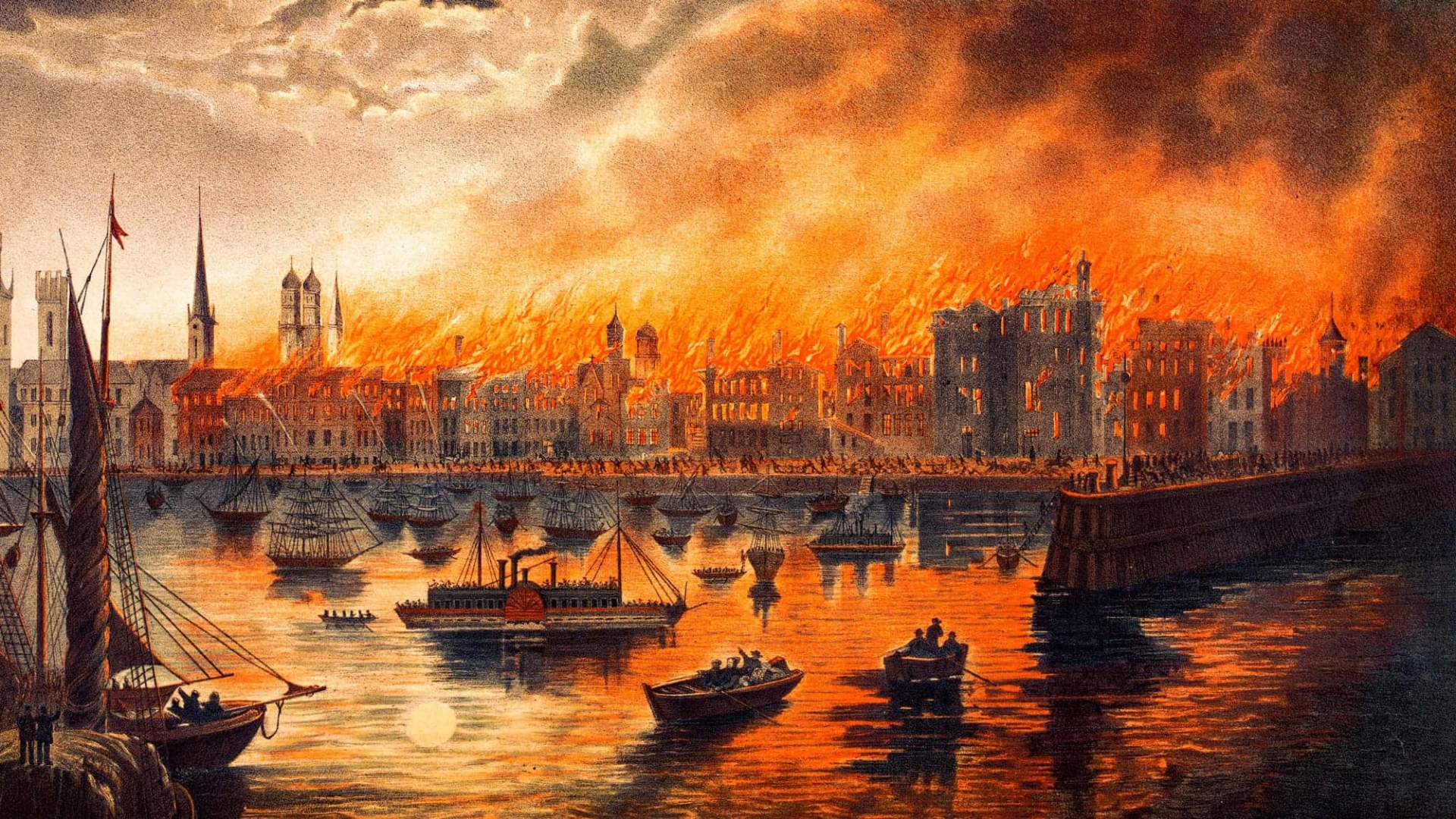 |
| Photo: interactive |
The myth: A cow kicking over a lantern
The truth: It remains uncertain
If you thought it was a cow kicking over a lantern, you've been believing a widespread rumor that was sparked way back when the fire first occurred. When some local boys started saying that the blaze was caused by a woman named Catherine O'Leary who had supposedly been milking her cow in her barn, the newspapers picked up the story and printed it. However, there's never been evidence that the tale was true. In fact, O'Leary vehemently denied the claim, saying she was in bed at the time and couldn't have been responsible. In 1997, the Chicago City Council officially cleared Catherine—and her cow—from all blame.
So, what really caused it? Well, to date, no one can say for sure. Some people suggest that men were gambling in O'Leary's barn, and one kicked over a lantern in a drunken furor. Others say that one man, Daniel "Pegleg" Sullivan, was stealing some milk from O'Leary and, in the process, accidentally knocked over a lantern. While others have gone so far to theorize that the fire was sparked by a meteorite shower.
11. Why does the Liberty Bell have a crack in it?
The myth: Overenthusiastic patriots
The truth: Shoddy craftsmanship
It's a common myth that enthusiastic patriots cracked the Liberty Bell while celebrating on July 4, 1776. But the truth is that the bell has been suffering from repeated cracks since it was first (poorly) cast. While the mistake has been addressed multiple times over the years, that persistent split keeps coming back. According to National Geographic, the crack we see today showed up at some point in the 19th century—though no one can agree on exactly when it popped up.
12. Did Texans die at the Alamo in the name of freedom?
The myth: The severely under-matched Texans stationed at the Alamo in 1836 died fighting for their rights.
The truth: The Texans were not fighting for freedom, but to maintain their slave trade.
In 1830, a new Mexican edict officially outlawed slavery and U.S. immigration in Texas. The 30,000 Texans living in the area (compared to only several thousand Mexicans) were outraged, leading to a revolt to make Texas an independent nation. General Santa Anna led the victory against the undermanned and understocked Alamo mission, which became a rallying cry for the rest of the Texan army.
When Santa Anna was forced to surrender in April 1836, the Republic of Texas was born. Texas would then enter the U.S. as a slave state.
13. When did the American Civil War end?
The myth: April 9, 1865
The truth: May 9, 1865
If you thought the Civil War ended when Robert E. Lee surrendered to Ulysses S. Grant, on April 9, 1865, you'd be off the mark. Following the Battle of Appomattox Court House in Virginia on April 9, 1865, it took a full month for the union to declare victory. But, once confederate Joseph E. Johnston, surrendered his army on April 26, 1865, the war was all but over. President Andrew Johnson officially declared victory on May 9, 1865.
14. Where did the American Civil War end?
The myth: Appomattox Court House
The truth: It's widely believed that the American Civil War ended when General Robert E. Lee surrendered to General Ulysses S. Grant, following the Battle of Appomattox Court House in Virginia on April 9, 1865. Lee's surrender, however, was hardly the end of the war. Several battles followed, most notably the Battle of Palmito Ranch near Brownsville, Texas that occurred more than a month later, on May 12-13, 1865. Despite news being slow in those days, both sides knew about Lee's surrender, and had even declared a ceasefire. Nevertheless, the two-day battle commenced when Union forces tried to capture Brownsville. Ultimately the Confederacy won this final land battle of the war, so they sure snagged that moral victory, at the absolute least.
15. Who was the first to fly non-stop over the Atlantic?
The myth: American aviator Charles Lindbergh claims the Orteig prize by flying non-stop over the Atlantic.
The truth: Though Lindbergh did earn the $25,000 prize for flying between New York and Paris in 1927, this feat had already been accomplished eight years earlier, by British pilots Alcock and Brown in 1919.
Lindbergh's status as a young, handsome aviator may have contributed to his feat being given more credence.
16. What started the Salem witchcraft crisis?
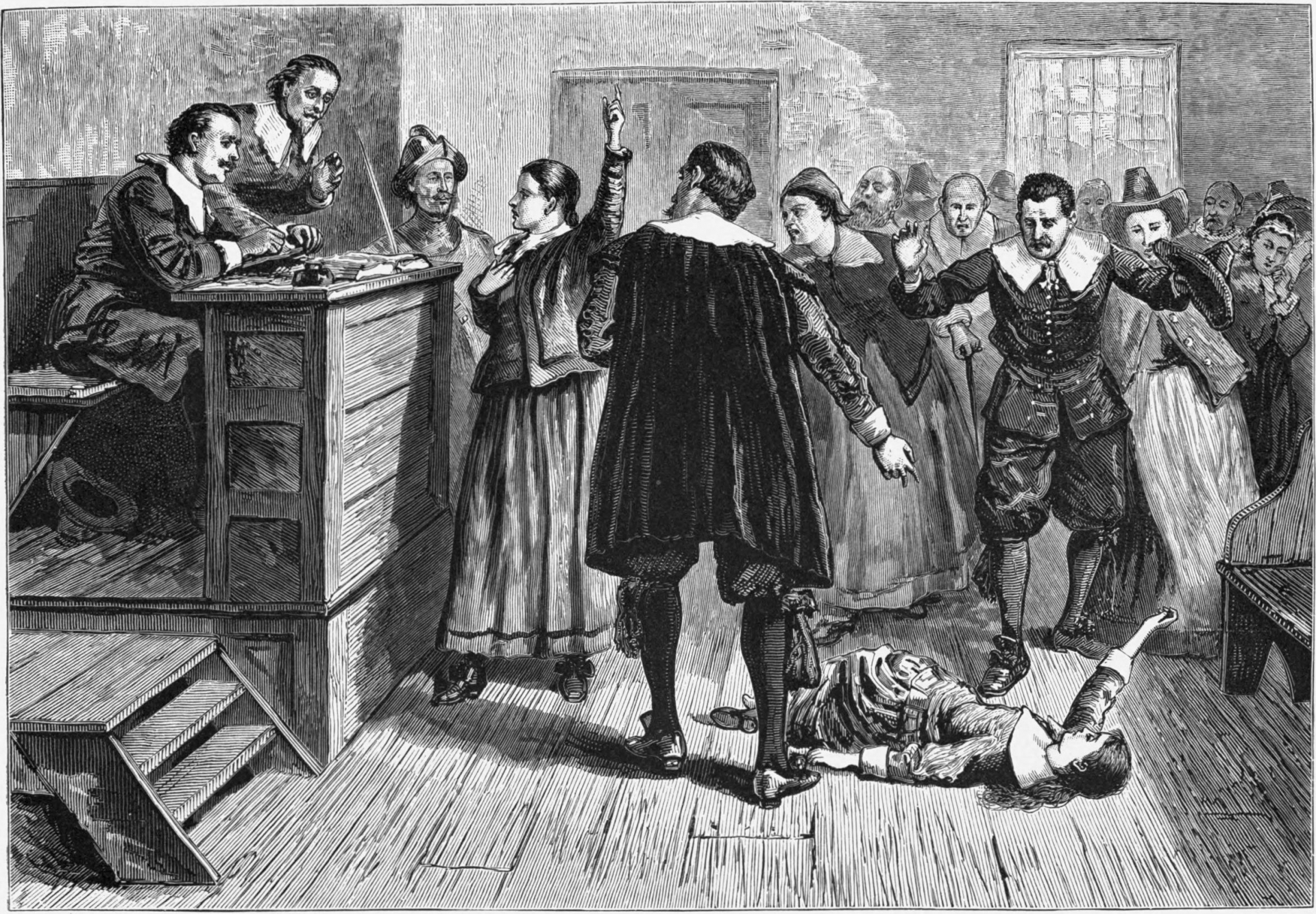 |
| Photo: wikipedia |
The myth: Hallucinogens
The truth: Ergot
Ergot is a natural fungus that can grow on rye in wet conditions. People in Salem at the time ate bread made from mixed cornmeal and rye flour. Back in the mid-1970s, an article speculated that the afflicted people in Salem Village had ingested ergot in their bread, and that made them hallucinate. (Ergot can have effects like LSD.) This has proved to be a popular and enduring explanation for the 1692 accusations.
17. Was the US responsible for winning World War II in Europe?
The myth: America might bring about the end of the Third Reich and World War II.
The truth: Hollywood films, comic books, and history classes like to paint America as the savior of Europe during World War II, but, like it or not, that title should probably belong to the Soviet Union.
Despite a non-aggression pact, Hitler began an invasion of the USSR in 1941 and over 80% of Germany's casualties, along with massive amounts of war supplies and materials, took place on this front.
Meanwhile, the U.S. and the U.K. argued over and delayed the opening of a second front until June of 1944. By then, the brutal eastern assault had essentially broken the back of the Axis powers. The added pressure of the western front hastened the demise of the Nazis, but it was by no means the deciding factor.
18. Who paid for the Statue of Liberty?
The myth: France
The truth: France—with some help from New York
France was responsible for the iconic statue, but New York City had to scramble to crowdfund enough money to pay for the giant granite base that the statue sits on. In fact, the Big Apple almost didn't come up with the money in time, and other cities, like Boston and Philadelphia—who both had the funds available—made attempts to have the statue erected on their turf instead.
19. What happened to those convicted at the Salem witch trials?
The myth: Witches were burned at the stake at the Salem witch trials.
The truth: While most associate the Salem witch trials of 1692 with witches burning at the stake, the truth is that not a single person was burned. Of the 20 people who were convicted of practicing magic, 19 were hung near Gallows Hill and one person was tortured to death.
But throughout history, many referenced burning witches at the stake, so it caught on. For example, a magazine in 1860 wrote, "The North ... having begun with burning witches, will end by burning us!"
20. What was the deadliest battle in American history?
The myth: The storming of Normandy (D-Day)
The truth: The Battle of Antietam
While there were at least 4,414 confirmed allied deaths on D-Day, that doesn't compare to the number of lives lost on September 17, 1862, during the Battle of Antietam. Right outside of Sharpsburg, Maryland, the brutal Civil War battle resulted in nearly 23,000 American casualties.
21. Did George Washington have wooden teeth?
The myth: George Washington had wooden teeth.
The truth: The first president of the United States, George Washington, did not, in fact, have wooden teeth. But he did have a lot of dental issues. The former war general wore dentures made of ivory, gold, and lead. But wood was never used in dentures and it was definitely not found in Washington's mouth.
No one truly knows how or why this rumor started. Some historians say that the ivory may have been worn down, therefore having a grainy, wooden appearance, confusing early observers.
22. Why did the pilgrims come to America?
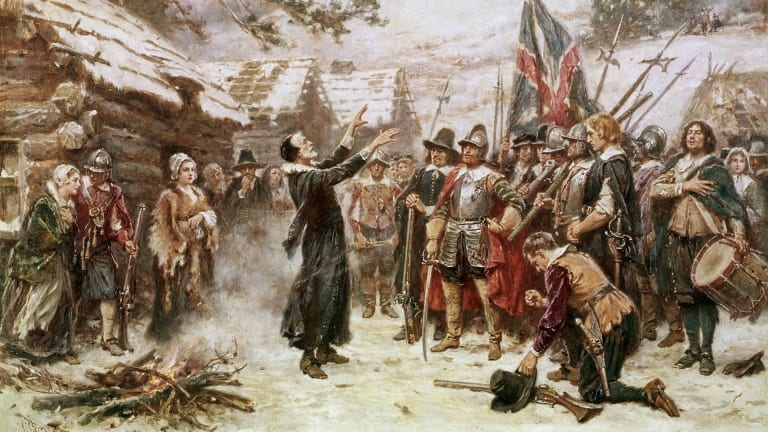 |
| Photo: history |
The myth: Religious freedom
The truth: Economic opportunity
Frankly, the pilgrims had already found an element of religious freedom in Holland. While it still remained a factor in their decision to set sail for the new world, the main reason for their journey was to find better economic opportunities.
23. Who invented the light bulb?
The myth: Thomas Edison or Benjamin Franklin
The truth: In the late 1800s, Thomas Edison was widely considered a genius after he invented the light bulb. But some say Edison is not the sole inventor. In fact, there were over 20 inventors who had created the incandescent light bulb before him. Additionally, it's rumored that he borrowed (or stole) details from those other inventors.
So, why does Edison get all the credit? In part, he was a great salesman, and he knew how to outpace everyone else who was working on the light bulb. Edison was lucky enough to receive the important patents he needed to be solely credited for the invention.
24. Paul Revere did not ride like mad from Boston to Concord
The myth: Paul Revere rode through the night to warn the colonists that "The British are coming!"
The truth: Henry Wadsworth Longfellow's poem, Paul Revere's Ride, played a major part in dramatizing this 1775 event.
In reality, the American patriot rode mostly in silence, to avoid army patrols while spreading the word. When speaking to people along his route to Concord, he used the much less catchy "The regulars are coming out" as a warning. Calling the enemy "the British" at this time would make little sense, as many colonists were still loyal to the crown and considered themselves to be Brits as well.
Additionally, Revere was quickly detained by a British patrol, which took his horse and forced him back to Lexington on foot. A fellow rider continued onto Concord.
25. Who invented the first car?
The myth: Henry Ford
The truth: Karl Benz
Karl Benz, the man behind Mercedes-Benz, invented his first automobile in Germany, circa 1885. By 1889, Benz was exhibiting his Model 3 commercial vehicle at the Paris World's Fair. Henry Ford's Model T didn't hit the market until 1908.
26. What did Neil Armstrong say on the moon?
The myth: Neil Armstrong said, "One small step for man, one giant leap for mankind," when he landed on the moon.
The truth: If you examine the famous line uttered by Neil Armstrong in 1969, you realize it doesn't really make sense. Because "man" and "mankind" essentially meant the same thing, if his famous line was accurate, what he basically said was, "that's one small step for mankind, one giant leap for mankind."
Upon returning home, Armstrong clarified that he did say "one small step for a man," which makes much more sense. Peter Shann Ford, a computer programmer, said he found proof that the missing "a" was actually just lost in transmission back to Earth.
27. The Wild West was not a daily shootout
The myth: The Wild West was murderously violent, as cowboys, vigilantes, sheriffs and Native Americans rustled for land and respect on the frontier
The truth: Though the idea of dueling cowboys and revolver-toting criminals in the plains has been popular since the gold rush, these stories were usually anecdotal and greatly exaggerated -- more about building legend than reporting fact.
Believe it or not, bank robberies took place only an estimated 12 times total on the frontier from 1859 to 1900, and murder was just as uncommon: the average number of frontier town murders was 1.5 per year. The fabled shootout at the OK Corral had a body count of three. Guns of the time were highly inaccurate, and settlers were more interested in cooperation than consternation.
Essentially, the criminals of today's world would make Billy the Kid run for the hills.
28. Why was Chicago nicknamed the Windy City?
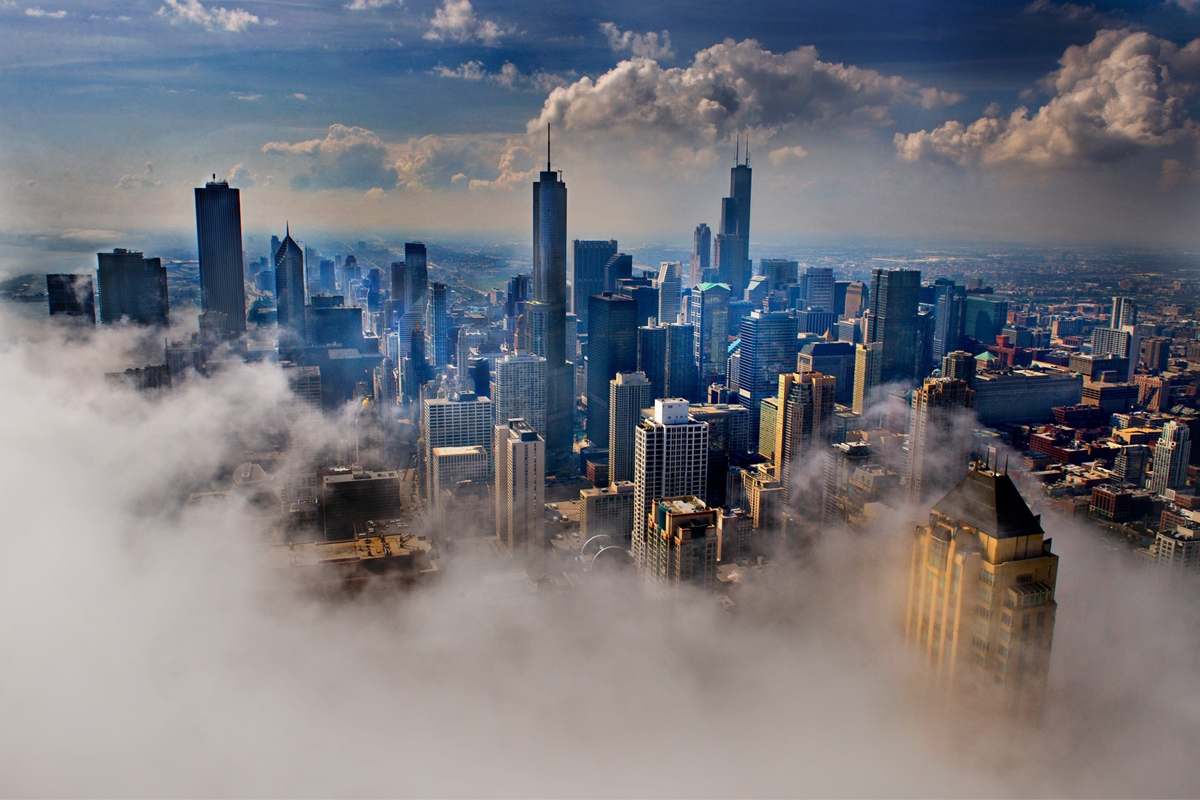 |
| Photo: wi-fiplanet |
The myth: It's really windy!
The truth: It's home to a whole lot of "windbag" politicians
While Chicago certainly does experience some blustery weather, the name has nothing to do with the outdoor elements. In fact, according to one USA Today report, Chicago doesn't even crack the top 10 windiest cities.
Chi-town likely picked up its nickname because of the "long-winded" politicians that rose to power during the 19th century. It's unclear when exactly the moniker was first used, but it came as such a ubiquitous term in newspapers throughout the 1800s that it just stuck—for good.
29. What happened after Pocahontas met John Smith?
The myth: They fell in love and lived happily ever after.
The truth: Pocahontas married John Rolfe
That whole story about Pocahontas and John Smith falling in love is just a fabrication of Disney movie magic. In reality, Pocahontas was just 11 or 12 years old when Smith showed up. And while she may have saved him from being killed by her powerful father, there's no evidence that the two fell in love or lived happily ever after. The real story is far less Disney-friendly.
First, she was held captive by the English for some time. Then, she converted to Christianity, changed her name to Rebecca, and, when she turned 17, married a tobacco planter named John Rolfe. The two had a son and eventually traveled to England, where Pocahontas passed away when she was about 20 or 21 years old.
30. Who drew Mickey Mouse?
The myth: Walt Disney
The truth: Ub Iwerks
The legendary animation pioneer, the guy who made "I'm going to Disneyland" the most common expression of celebration in the free world, didn't actually draw his most famous creation. Sure, Mickey Mouse was his idea, and he provided the voice. But everything iconic about Mickey Mouse—the pancake ears, the red shorts—are the creation of Ub Iwerks, Disney's favorite animator. The next time you see somewhere wearing a Mickey Mouse shirt, be sure to tell them, "Ah, I see you're a fan of Ub Iwerks."
31. When did the Revolutionary War end?
The myth: October 17-19, 1781
The truth: September 3, 1783
It's true that Charles Cornwallis surrendered on October 17, 1781—formally signing articles of capitulation two days later, effectively ending full-scale combat operations in the colonies. But the war didn't officially end until nearly three years later. In November 1782, British and American representatives signed preliminary peace terms in Paris. However, fighting continued until September 3, 1783, when Britain formally recognized American independence with the Treaty of Paris.
32. Who invented baseball?
The myth: Abner Doubleday
The truth: Alexander Joy Cartwright, Jr
As the story goes, Abner Doubleday invented baseball in 1839, in Cooperstown, New York. But, according to the Society for American Baseball Research, "no evidence exists" to suggest that Doubleday had "anything to do with baseball." Accounts from that time suggest he even disliked the sport: Doubleday's own obituary says "he was rather averse to out-door [sic] sports."
Frankly, it's hard to say who really came up with the popular pastime. But all signs point to Alexander Joy Cartwright, Jr. In addition to founding the New York Knickerbockers Base Ball Club in 1845, he was inducted to the Baseball Hall of Fame in 1938, where his plaque reads: "Father of Modern Base Ball."
33. What species did Benjamin Franklin want as our national bird?
The myth: Turkey
The truth: C'mon—it was a joke
In a 1784 letter to his daughter, Benjamin Franklin wrote about the new American seal, and the bird emblazoned on it. "For my own part I wish the Bald Eagle had not been chosen the Representative of our Country," Franklin wrote. "He is a Bird of bad moral Character. He does not get his Living honestly. You may have seen him perched on some dead Tree near the River, where, too lazy to fish for himself, he watches the Labour of the Fishing Hawk."
Instead, Franklin had an alternative suggestion: the turkey. "For the Truth, the Turkey is in Comparison a much more respectable Bird, and withal a true original Native of America… He is besides, though a little vain & silly, a Bird of Courage, and would not hesitate to attack a Grenadier of the British Guards who should presume to invade his Farm Yard with a red Coat on."
Yeah, he was joking.
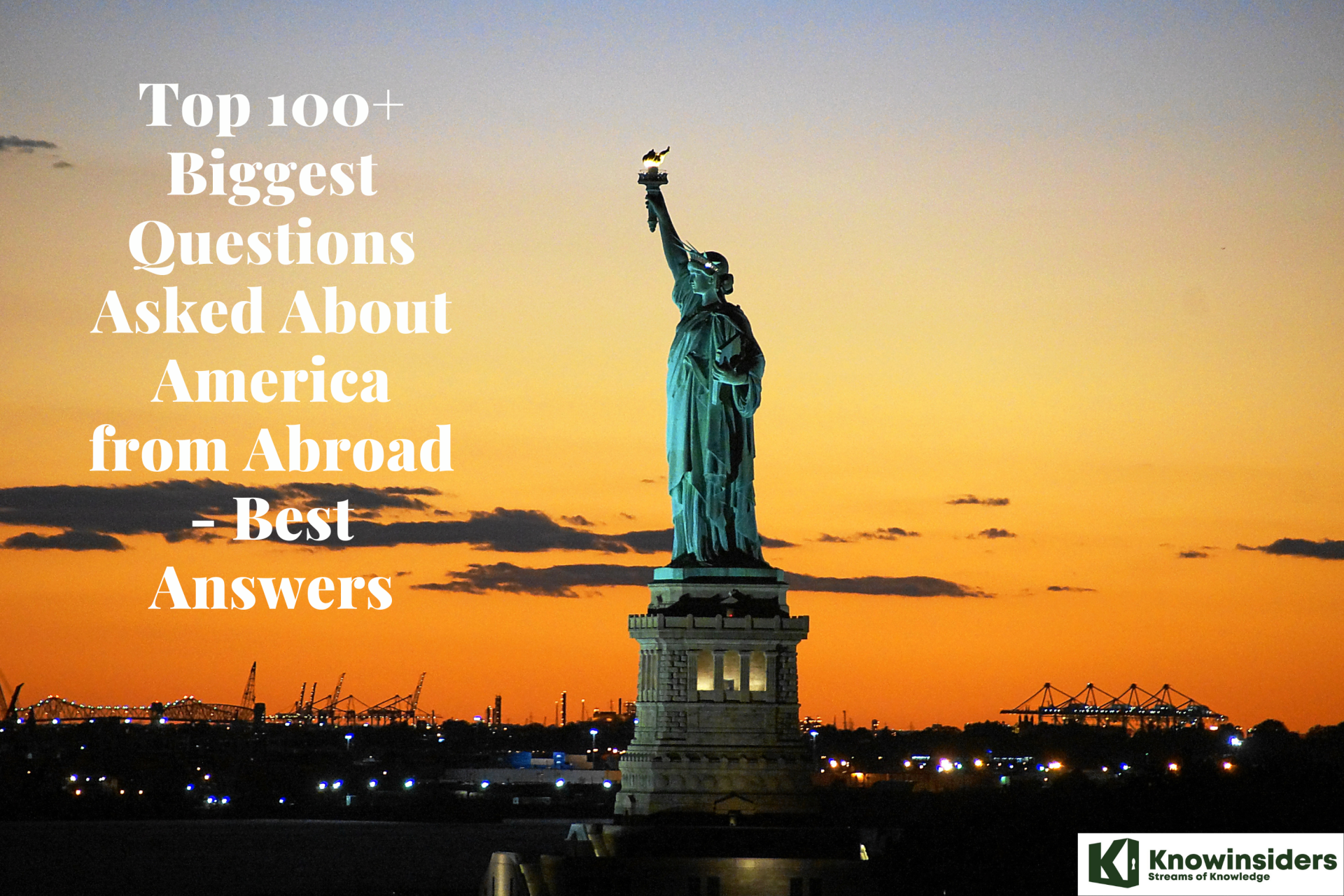 Top 100+ Biggest Questions Asked About America from Abroad and Best Answers Top 100+ Biggest Questions Asked About America from Abroad and Best Answers Most foreigners abroad consider themselves fairly knowledgeable about America. These 100 questions and answers about America will provide you with useful information. |
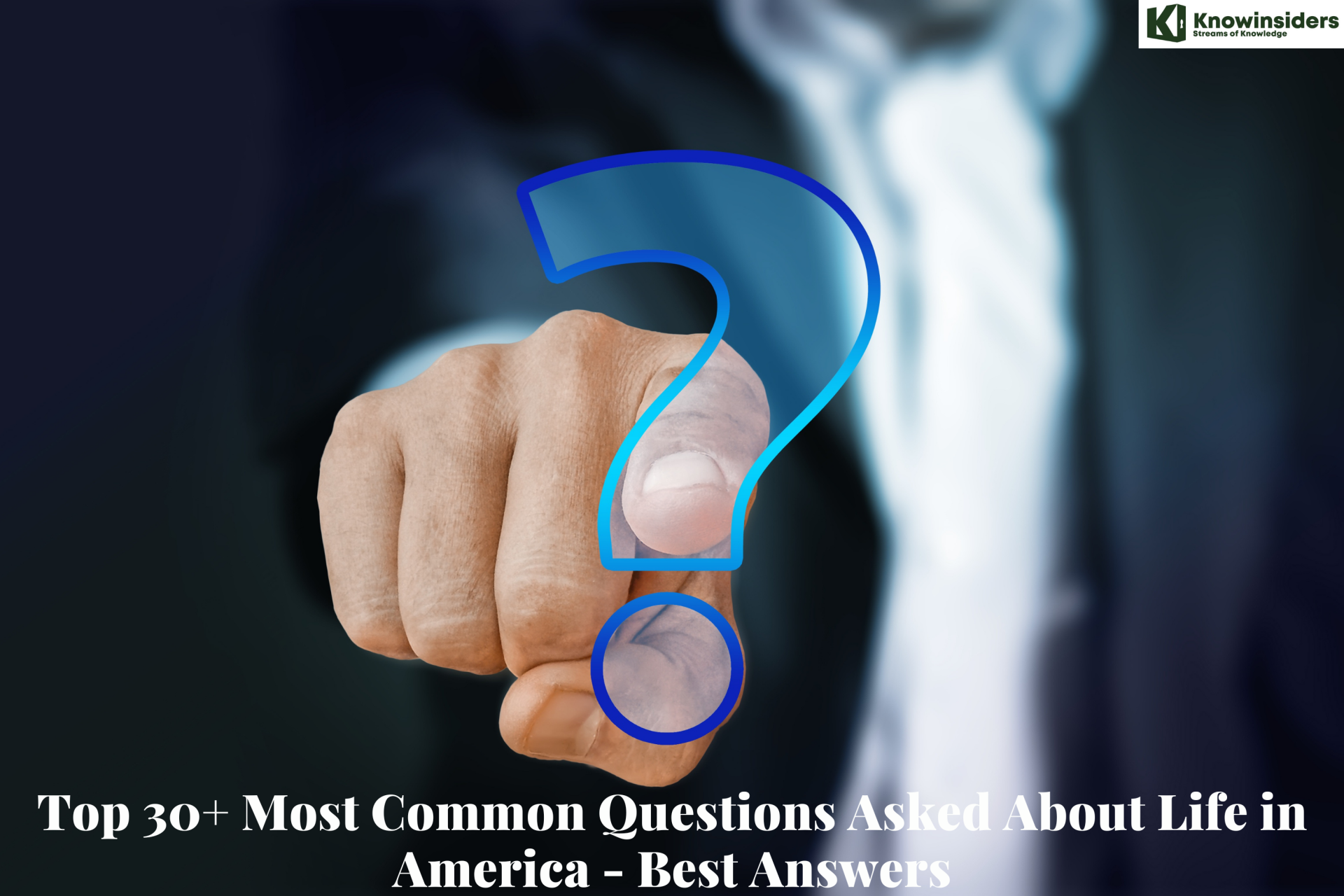 Top 30+ Most Common Questions Asked About Life in America and Best Answers Top 30+ Most Common Questions Asked About Life in America and Best Answers Discover all the amazing and interesting things America has to offer with these 20 popular questions that everyone asked about life in America. |





















